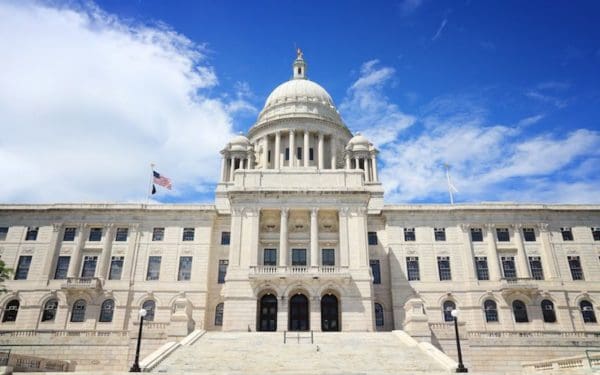
The Vermont state house, where legislators are poised for climate action next session. Photo credit: Shutterstock.
In the realm of energy and climate change, this year’s legislative session was a big yawn. Legislators took some baby steps towards progress at a time when big leaps are needed. But all journeys begin with a single step, so these modest actions can set the stage for the hard work ahead. While it’s good we are not back-tracking, legislators need to take serious steps forward on climate action next session.
What the Vermont Legislature Accomplished This Year
First, there additional money to support cleaner wood heat. Vermont has lots of woods, and many people heat with wood stoves. Newer wood stoves are cleaner, burn wood more efficiently, and cut down on polluting air emissions. As Vermont looks to reduce fossil fuel use, helping more Vermonters use advanced wood heat helps support the local economy while reducing pollution.
The Legislature also provided direction to use money from the Volkswagen settlement – money resulting from the company’s deceit about their cars’ harmful diesel emissions – to help put more clean electric cars, trucks, and busses on the road. This is an important use of Volkswagen funds. Transportation accounts for 45 percent of carbon pollution in Vermont and these funds will help us jumpstart the switch to electric vehicles – particularly for buses, school buses and trucks. It also clears the way for us to leapfrog over diesel engines as we cut back on fossil fuels and reduce other toxic air emissions.
A final step forward came with legislation to improve the energy efficiency of common appliances such as computer monitors and commercial dishwashers. This law keeps strong efficiency standards in place even if the federal government backslides on efficiency. At a time when our federal government is moving full-steam backwards to remove climate protections, Vermont’s efforts are a breath of fresh air. The bill enjoyed broad support and shows a small but important path forward in an area where Vermont is leading alongside California.
Where Vermont Only Treaded Water
Vermont legislators missed the opportunity to move forward on carbon pricing. The Legislature took testimony on a broadly supported bill that CLF helped advance, but ultimately did not pass it. The bill would have priced carbon pollution and refunded the money collected to all electricity customers on their electricity bills, helping to support moving away from fossil fuels and using cleaner renewable electricity instead. Although it was backed by a diverse coalition of business leaders, mayors, low-income advocates, and environmental groups, the bill faced skepticism and opposition from Governor Scott.
Instead of solid progress, the Legislature funded an independent study to evaluate and compare different ways of reducing greenhouse gas emissions from fossil fuels. This study will look at various regulatory and market mechanisms, such as carbon pricing, and can help inform the next session about the pros and cons of different methods. This will allow them to hit the ground running when the new legislative session begins next January.
Where Vermont Needs to Go Next
Treading water is not enough. Vermont has a reputation for being “green” and on the forefront of many energy and climate policies. That has lured some leaders into complacency at exactly the wrong time. In the past few years, Vermont’s greenhouse gas emissions have risen. This rise follows a pretty small but steady decline from 2000 to 2012. In the wake of a winter of thaws and a fall and spring of devastating wind and rain storms, standing still on climate action is unacceptable.
Building on the small steps taken this past year, going forward, Vermont has some great opportunities. It is time for Vermont to double down on renewable energy and energy efficiency, and to jumpstart those efforts by putting a price on carbon pollution and putting in place clear requirements to reduce greenhouse gas emissions. The state has lofty goals of reducing emissions 75 percent by 2050, but they remain only goals. If Vermont wants to grow the economy, meet the goals of the Paris Accord, and provide communities with real climate resilience, the Green Mountain State needs to turn its goals into more than aspirations. The small steps this year point in a good direction but fall far short of where we need to be.
This past spring, thousands of high school students marched on the Vermont Statehouse demanding action on climate change. These students know we can turn the tide on climate change – not in the future, but now. But it will only happen when we build on our past success and don’t let anything dampen our resolve. When inaction or backwards action is commonplace at the federal level, states like Vermont with a strong history of action can lead the way. We need to do it – now.



